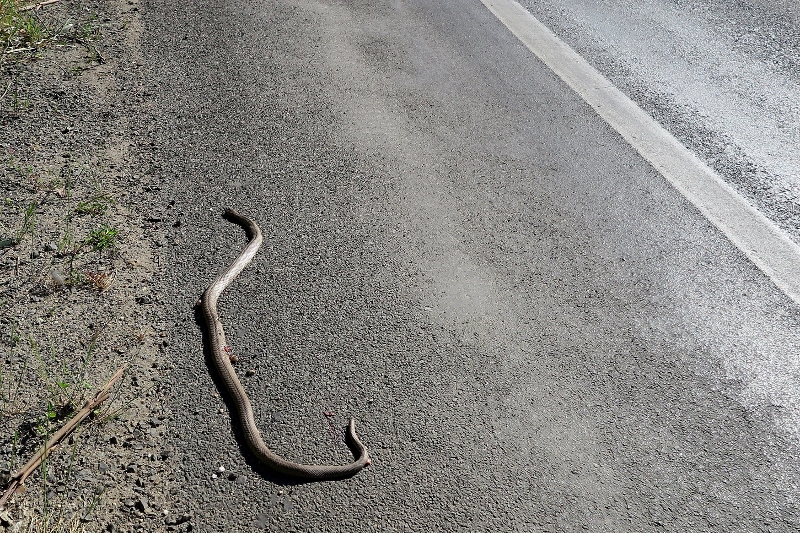The weather’s warming, and reptiles are out. It’s time to be careful wandering in grassy areas. And of course it’s time to pay attention on the highway, so as not to be part of the ongoing slaughter of our reptiles.
The photo above is of an Eastern Brown snake on the Midland Highway. It’s one of the country’s most venomous, but like any other creature it has its fascination: and it’s worth reading the fascinating information on the National Museum website. Here are a few excerpts:
‘The species’ known predators include birds of prey and feral cats. They appear to have immunity to the venom of a would-be predator, the Mulga Snake (Pseudechis australis), as well as their own species (one snake that had been swallowed by another Eastern Brown was regurgitated an hour later, apparently not too much worse for wear). However they are not so fortunate with the effects of cane toad venom and rapidly die from ingesting them…
‘Because the Eastern Brown Snake can cope and even thrive in areas of human disturbance, and its natural range happens to include some of the most populated parts of the country, this species is probably encountered more than any other type of snake. Being an alert, nervous species they often react defensively if surprised or cornered, putting on a fierce display and striking with little hesitation. However, if approached over a distance, they will usually choose to flee or else remain stationary, hoping to avoid detection… When confronted by an intruder, the Eastern Brown displays one of two forms of threat. In the mild threat, the snake raises the head and anterior part of the body slightly off and parallel to the ground, with the neck spread laterally and slightly hooked but the mouth closed. In this posture, the snake faces the threat side on. If issuing a strong threat, the snake raises the anterior part of the body well off the ground in an s-shaped coil and with the mouth slightly open, ready to strike – in this posture, the snake faces the threat more squarely. Strikes delivered from this posture are slower but more accurate that strikes delivered from other postures. The common feature of both displays is the spreading of the neck, and this behaviour precedes most bites…
‘As the initial bite is generally painless and often difficult to detect, anyone suspected of receiving a bite from an Eastern Brown Snake should call for medical attention without delay. This species has the unfortunate distinction of causing more deaths from snake bite than any other species of snake in Australia. Many bites have been a direct result of people trying to kill these snakes and could obviously have been avoided. Simple precautions, such as wearing long pants, thick socks and solid footware when working or exploring outdoors greatly reduces the risk of being envenomated should there be a close encounter with a startled snake.’





 Click on image for info/order page
Click on image for info/order page Click on image for info/order page
Click on image for info/order page Click on image for info/order page
Click on image for info/order page




















